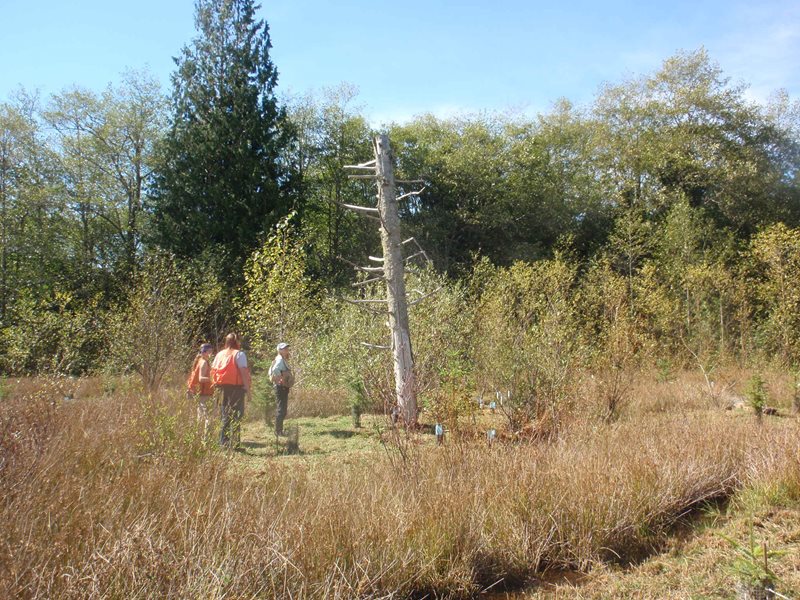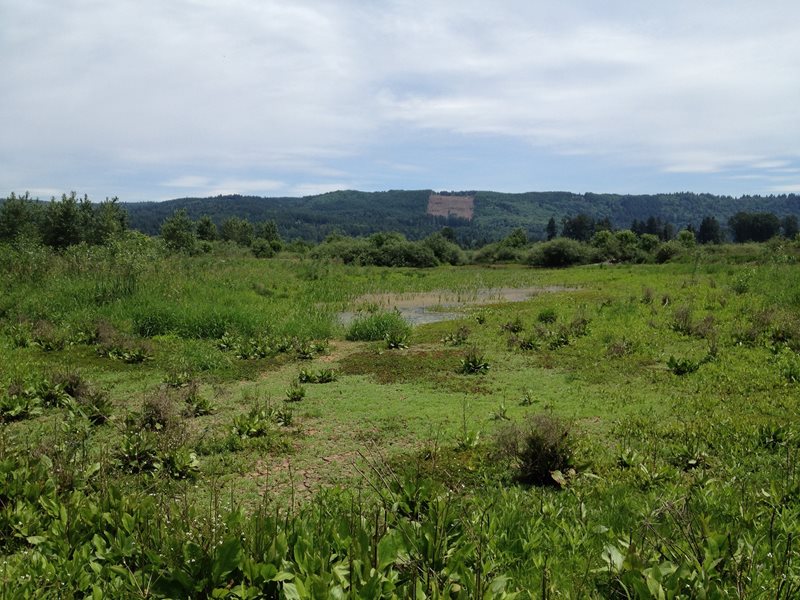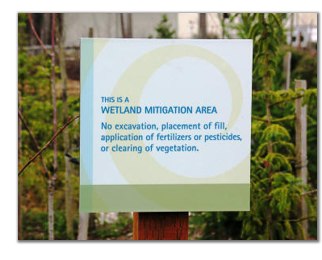
Performing mid-monitoring inspection of a five-year old concurrent compensatory mitigation site in Skagit County. It was implemented to offset impacts to wetlands and other aquatic resources resulting from a commercial development.
May is the month to recognize and celebrate the ways Washington’s wetlands enrich the environment and communities. As we celebrate the importance of wetlands during American Wetlands Month, we wanted to share our recently published updated guidance aimed at achieving a no-net-loss of wetlands in Washington by improving the quality and effectiveness of compensatory wetland mitigation. Compensatory mitigation is designed to restore, establish, preserve, or enhance wetlands when unavoidable impacts occur.
Our updated Wetland Mitigation in Washington State: Part 1: Agency Policies and Guidance is designed to help the regulated public meet federal and state laws and rules to ensure unavoidable, adverse impacts to state wetlands are successfully offset.
Compensatory mitigation when wetland impacts can’t be avoided
The 199-acre Snohomish Basin Wetland Mitigation Bank after grading to remove canary grass. The bank offers credits for sale to offset unavoidable impacts to wetlands in the area.
We updated the guidance in cooperation with the U.S. Environmental Protection Agency (EPA) and U.S. Army Corps of Engineers (Corps). Last fall, the agencies held a 60-day comment period so the public could review and comment on the document.
In Washington, proponents for projects, actions, or activities that would discharge pollutants to wetlands and streams must work to avoid those environmental impacts in the first place — and minimize any adverse effects that would occur. Finally, they must offset or compensate for losses that are unavoidable.
The updated guidance reflects how state and federal requirements and expectations for wetland mitigation align, giving applicants better predictability and consistency for their projects, plans, and actions. The requirements apply to public and private developers, local governments, and state agencies in Washington.
Working cooperatively to ensure mitigation projects successful
When unavoidable wetland impacts are proposed, Ecology, EPA, and the Corps require project proponents to offset those impacts using compensatory mitigation.
The updated guidance builds on the original 2006 interagency document but also takes into account state and federal experience with compensatory wetland mitigation over the past 15 years.
Ecology wetland specialists inspect a compensatory wetland mitigation site shortly after planting was completed.
Incorporating latest laws, rules, and best practices
EPA provided a Wetland Program Development grant to help support our work to ensure we provide project proponents and local governments the best, most up-to-date guidance. Our document incorporates new information, including:
- Updated federal wetland mitigation rule enacted in 2008
- Washington’s wetland mitigation banking rule adopted in 2009
- New tools incorporating a watershed approach to calculate wetland losses and mitigation gains
- Lessons learned from putting various mitigation measures in place
- Eliminating or revising out-of-date references and web links
The guidance can also be used by local governments to develop consistent mitigation requirements in the wetland section of their shoreline master programs and critical areas ordinances.
More information
Find the updated guidance and other mitigation resources on our wetland mitigation resources web page.




